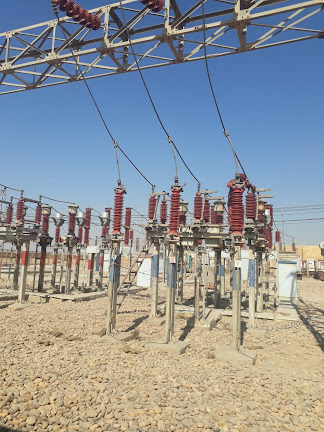Thermal Characteristic of Cables
- Maximum Current Capacity
There are many reasons that prevent the cables from running when the cable is overheated, including the expansion, which may result in bubbles and ionization. Also, the expansion in the oil may lead to the explosion of the jacket and the oil may lose its viscosity and leak from the higher levels, and thermal instability may occur as a result of the rapid increase in the loss in The insulator with temperature and the latter phenomenon is not likely to occur in the cable (up to 33 KV), but it occurs in the higher voltage cables. To prevent harmful effects, the maximum temperature of the conductor must be set at 65 ° C in the cables dipped with viscous oils.
- Thermal Resistance
Its unit is thermal ohm, which is the thermal resistance that requires a temperature difference equal to one degree Celsius to produce an heat flow of one watt (i.e. 1 joule per second).
الخواص الحرارية للكابلات Thermal Characteristic of Cables
1. حمل التيار الأقصى Maximum Current Capacity
هناك العديد من الأسباب والتي تمنع تشغيل
الكابلات عند زيادة سخونة الكابل ومنها
التمدد والذي ربما ينتج عنه فقاعات ويحدث تأين , كذلك التمدد في الزيت ربما
يؤدي لانفجار الغلاف وربما يفقد الزيت لزوجته ويتسرب من المستويات العليا, وقد يحدث
عدم الاستقرار الحراري نتيجة الزيادة السريعة في الفقد في العازل مع درجة الحرارة
والظاهرة الأخيرة لا يحتمل حدوثها في الكابل
(حتى 33 ك.ف) ولكن تحدث في الكابلات الأعلى جهد , ولمنع التأثيرات الضارة
يجب أن تضبط درجة الحرارة العظمي للموصل عند 65
درجة مئوية في الكابلات المغموسة بزيوت لزجة .
2.
المقاومة الحرارية Thermal Resistance :
ووحدتها هي الأوم الحراري وهي المقاومة الحرارية التى تتطلب
فرق في درجة الحرارة يساوي واحد درجة مئوية
لتنتج سريان للحرارة مقداره واحد واط (اي 1 جول لكل ثانية).




Comments
Post a Comment